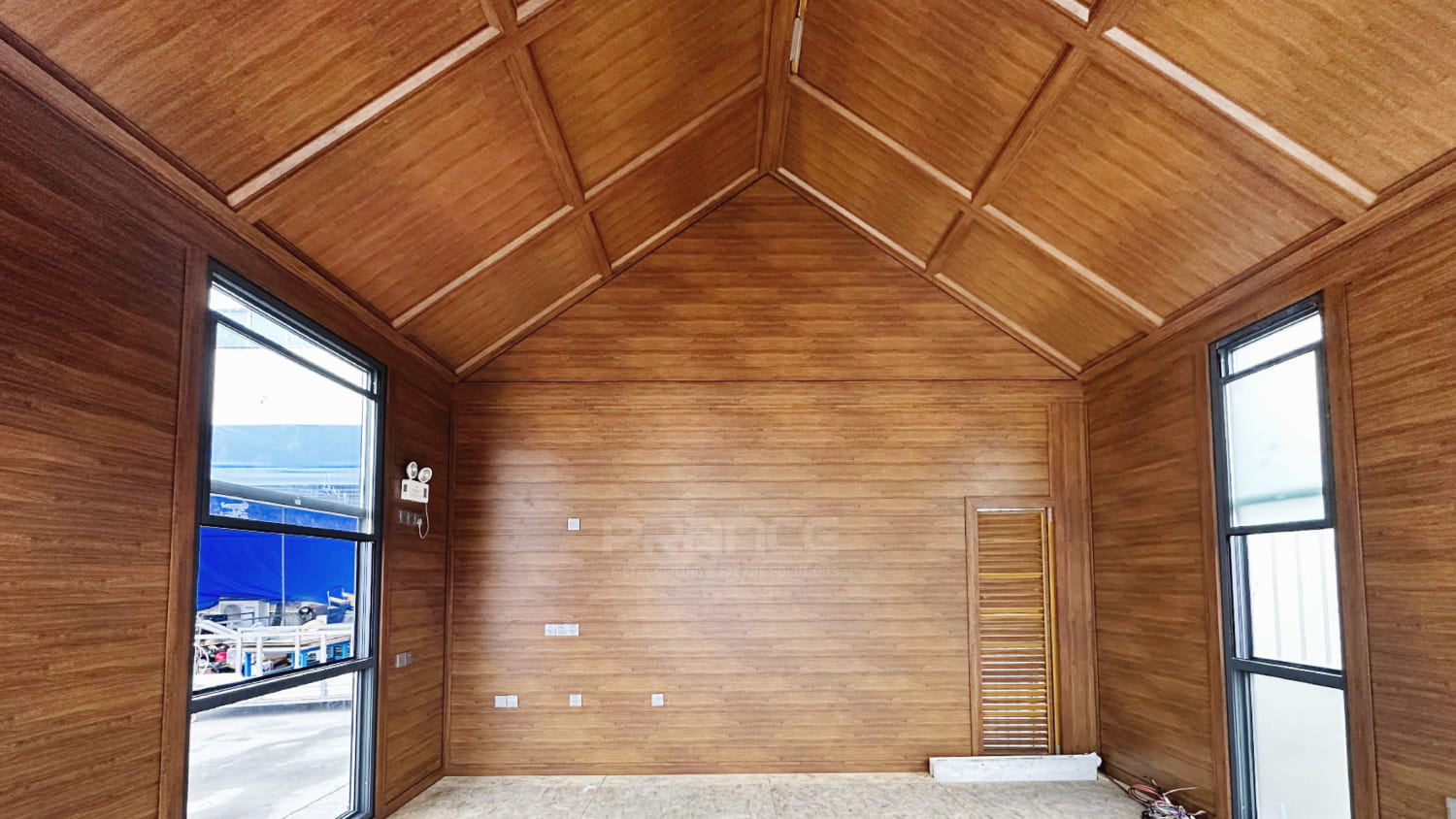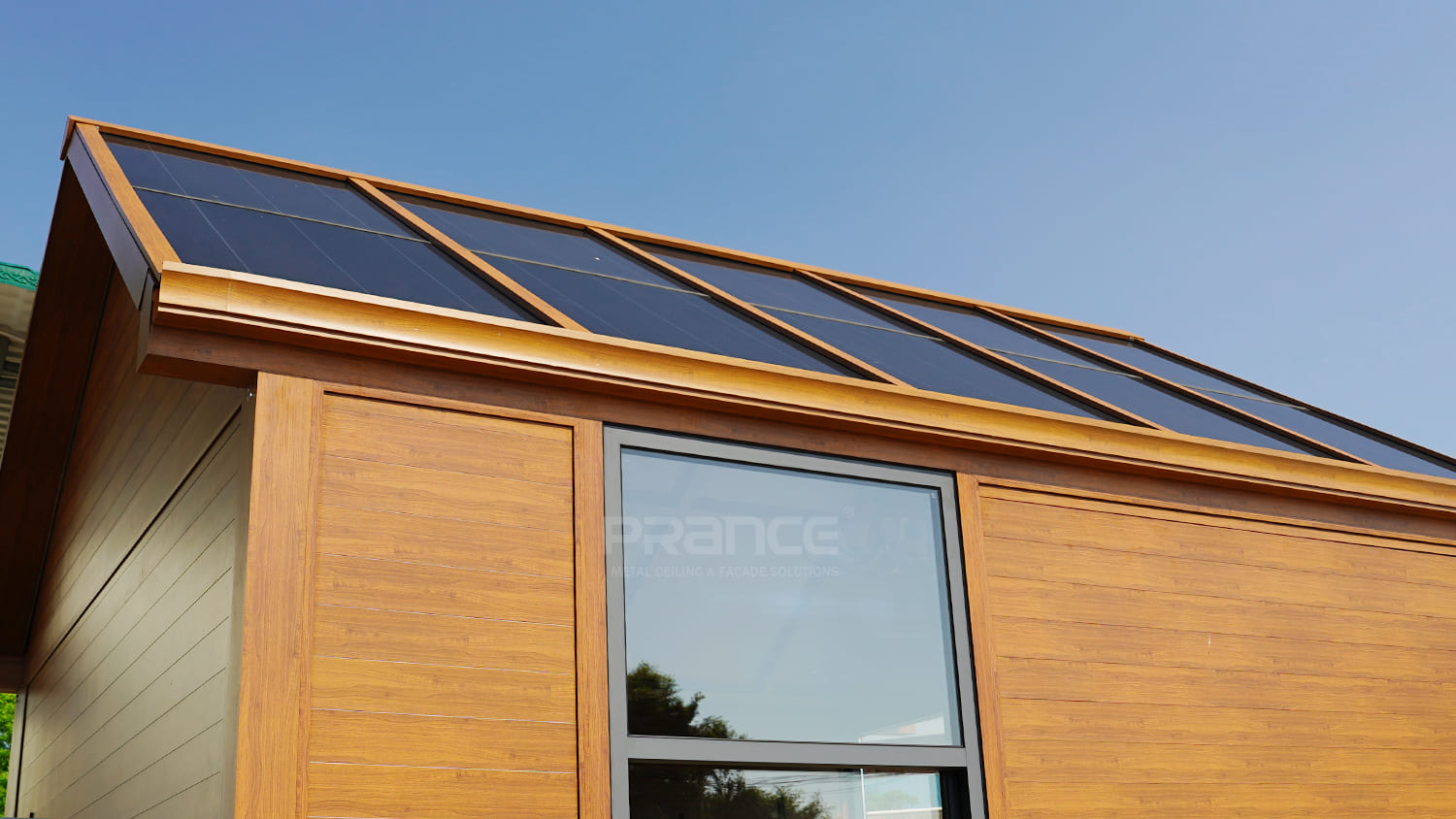PRANCE metalwork is a leading manufacturer of metal ceiling and facade systems.
6 Key Steps in Modular Home Construction You Should Know
Modular home building is altering the way houses are constructed. It's not only quicker; it's brighter, cleaner, and more effective. Many builders and families are adopting this strategy, producing homes that last, cutting expenses, and saving time.
A well-planned approach begins Modular home construction. Every stage, from material selection to final assembly, is meticulously monitored for quality and speed. Leading companies like PRANCE Metalwork Building Material Co. Ltd have improved the process by including energy-saving parts like solar glass and innovative technologies.
Let's walk through the six main stages of modular home building so you can understand precisely how it all fits together.
Step 1: Designing the Home with Smart, Flexible Layouts

Design starts with modular home building. Modular homes use prefabricated components, unlike conventional houses built from the ground up. These units have to be carefully engineered to fit together during installation.
At this point, clients collaborate with the maker to select features and designs. PRANCE has several designs appropriate for mixed-use, commercial, and residential applications. Their customizability sets them apart. You can select interior layouts, glass or solid wall panels, and aluminium or solar glass roofs.
Though the choices are varied, the design adheres to modular guidelines to guarantee everything fits inside a movable structure. PRANCE houses are designed to fit within conventional 40-foot containers. From day one, the design is customized for optimal efficiency, easy on-site assembly, and smooth transport.
Step 2: Choosing Durable, Weather-Resistant Materials
Appropriate materials are among the most crucial factors in modular home building. Unlike low-end or temporary structures, PRANCE modular homes use long-lasting aluminum and steel. These lightweight and corrosion-resistant materials are perfect for a wide spectrum of environments.
Aluminium is perfect for coastal or humid conditions since it does not rust. Steel strengthens the building and helps it withstand severe weather, such as strong winds or heavy rain. Over time, these metals also outperform wood, which can distort, decay, or draw insects.
The materials are chosen beforehand to cut delays. PRANCE guarantees that every house produced using modular home construction fulfills rigorous durability criteria by standardising high-quality materials such as aluminium and steel.
Step 3: Precision Manufacturing in a Controlled Environment

Once the design is set and materials are chosen, the next step is the industrial production of the modules. At this point, modular home building really distinguishes itself from conventional approaches. Controlled machinery and rigorous quality inspections build everything indoors.
Every module, including structural components, electrical wiring, insulation, and even innovative systems like lighting and ventilation, is built according to the authorised design. The production environment guarantees that every cut and connection is correct and protects materials from weather damage.
PRANCE's manufacturing lines have improved automation. This guarantees great consistency since the components are created quicker and with fewer mistakes. Every part is inspected before it departs the manufacturer, lowering the likelihood of installation delays or faults.
Step 4: Preparing the Site for Delivery and Setup
The site is being readied even as the modules are being produced. By letting these two processes occur simultaneously, modular house building saves weeks—sometimes months—of waiting.
Site preparation entails leveling the ground, preparing foundations or supports, and ensuring access for the delivery truck. Delivery is simple and doesn't need big cranes or bespoke logistics since PRANCE homes are sent in conventional containers.
With this dual-track approach—factory production plus site preparedness—modular home building is very efficient. It is particularly useful in congested cities or distant locations where conventional buildings would experience more delays.
Step 5: Fast On-Site Assembly with Minimal Labor
The actual difference in modular home building becomes apparent when the modules land on site. Only four workers can assemble the whole building in two days rather than over months.
PRANCE houses are meant for quick installation. Every component is pre-fitted and marked. The walls, roof, floors, and interior systems fit like a puzzle. On-site cutting, welding, or significant modifications are unnecessary.
Features like innovative curtains, lighting control, and ventilation systems are fully wired and installed. That implies that the building will be almost move-in ready after it is up.
This cuts disturbance and saves on labour expenses. It also allows homeowners or developers to begin using the area immediately—whether for living, working, or renting.
Step 6: Adding Energy-Saving Solar Glass and Final Touches

The last step in modular home building is finishing the structure with elements that improve comfort and minimize long-term costs. Among the most intelligent improvements is optional photovoltaic solar glass from PRANCE. This kind of glass transforms sunshine into usable power rather than only letting light in.
Installed on the roof, the solar glass complements the style well. Unlike conventional solar panels, it does not require additional mounting gear or supports. Once activated, it lowers monthly energy costs and helps to lessen reliance on the electrical grid.
Other finishing touches include final quality inspections, smart system preference adjustments, and installation of the configurable facades. Once everything is authorised, the house is ready for use.
The finished house offers savings and long-term value with built-in innovative technologies, durable materials, and solar electricity. Its modularity also allows you to relocate, grow, or replace it if your needs change.
Conclusion
More than a fad, modular house building is a better approach to construction. It has new features that simplify daily life and are quicker and more efficient. From design to final setup, every stage is geared toward providing high-quality, ready-to-use spaces that conserve time and money.
PRANCE houses demonstrate that modular home building can be of high quality. They're easy to maintain and constructed to last, with solar glass roofs, corrosion-resistant materials, and smart features.
Choose the modular approach if you want to create smart. Structured for speed, built for durability, and meant for the future.




















